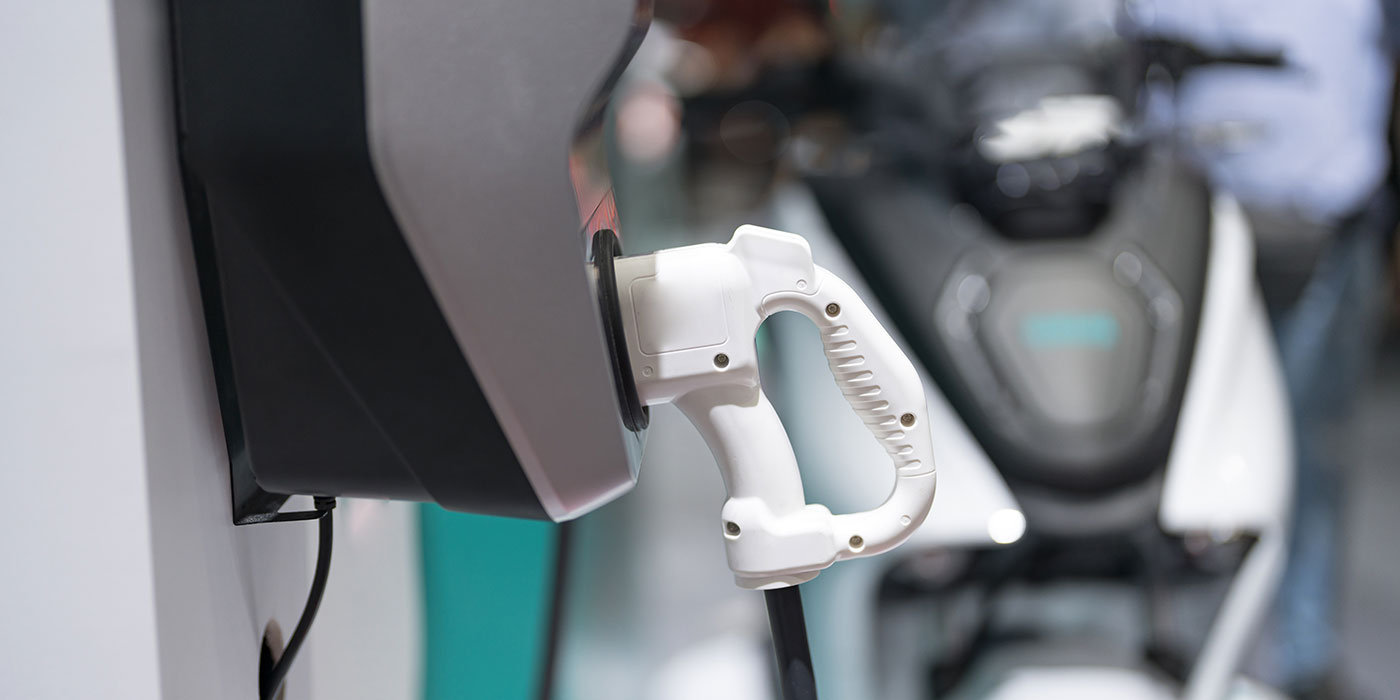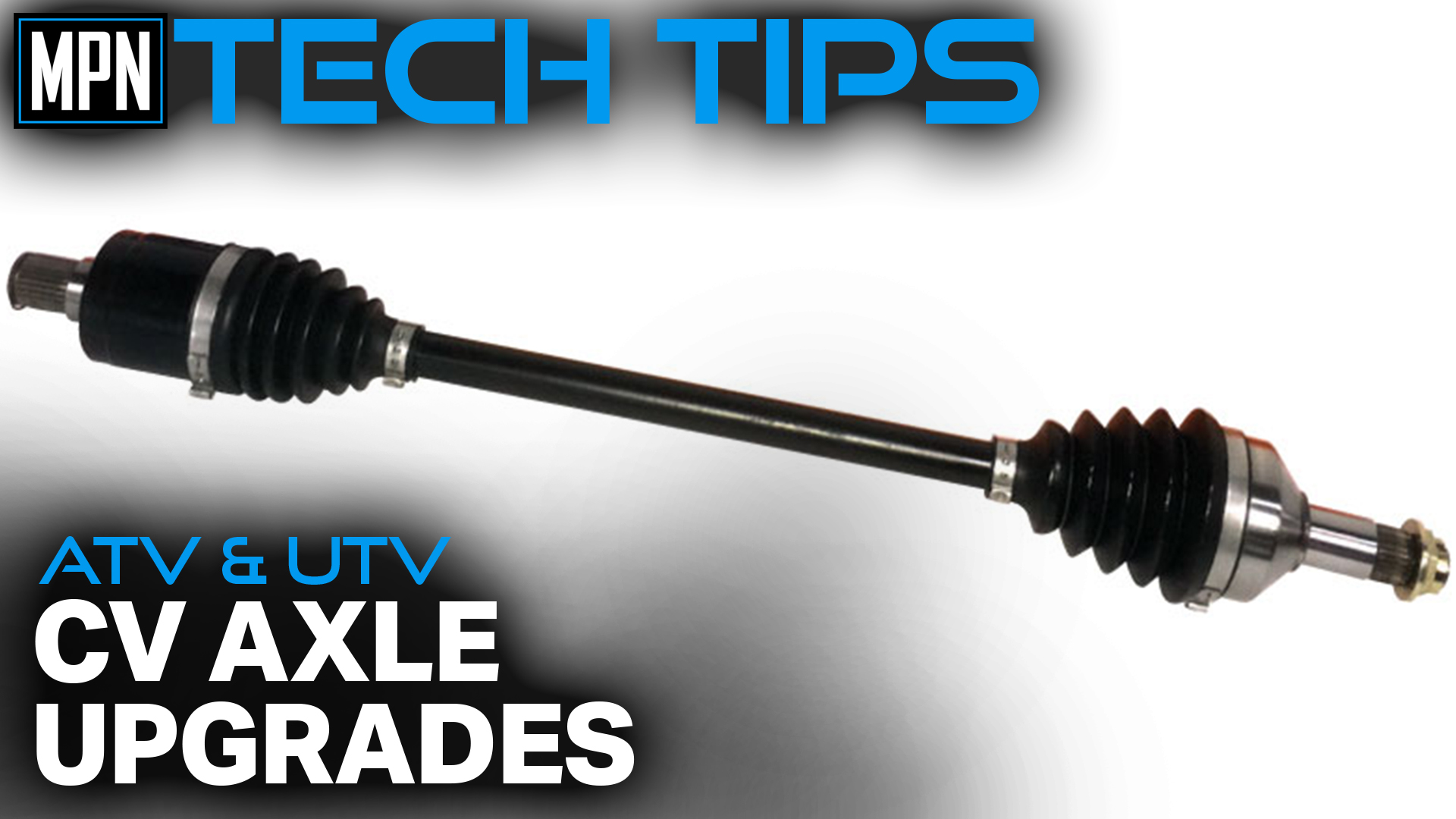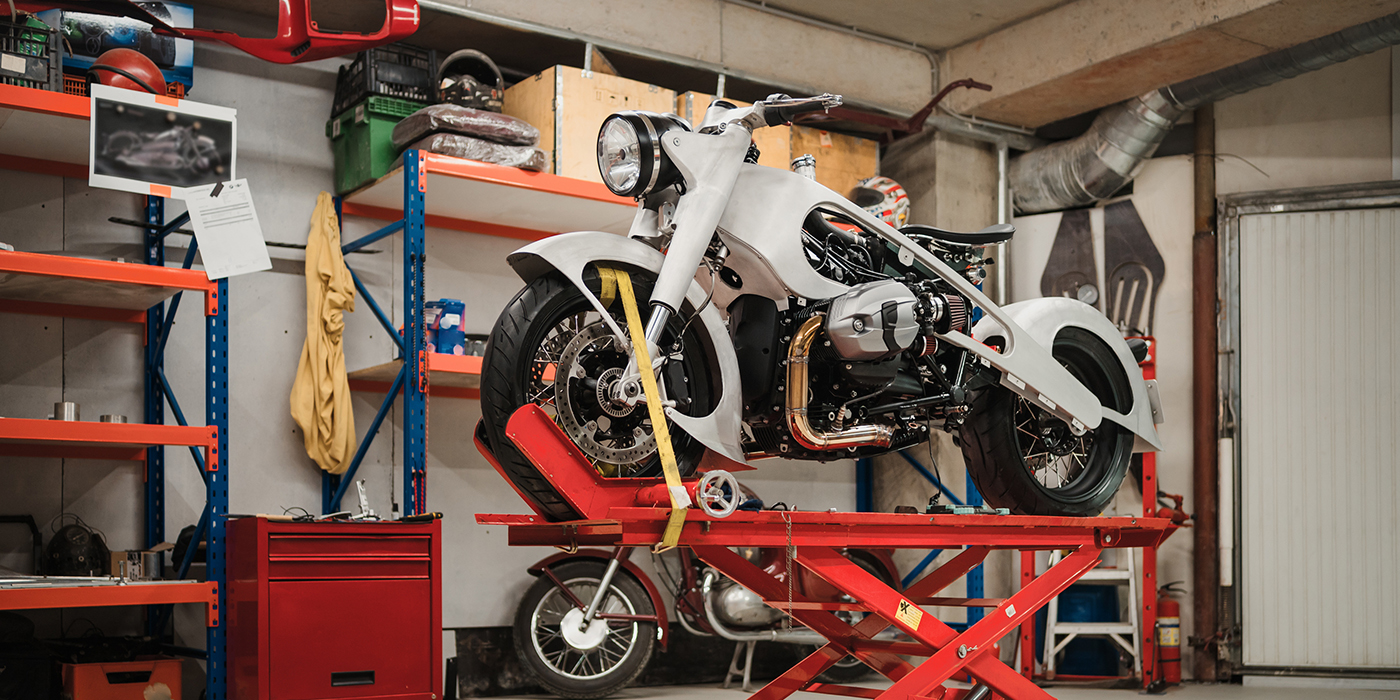It’s always fun to go fast on a motorcycle or powersports vehicle, yet slowing down is equally — if not more — important for safety. On rides with steering wheels, a single foot brake applies pressure to all four wheels. However, braking is a little trickier on rides with handlebars.
Typically, finger and thumb brakes apply pressure to the front wheel, and foot brakes apply pressure to the back wheel. It’s up to the rider to find which braking method he or she prefers — and when it comes to racing, some of that preference comes down to what’s more comfortable to the rider in a particular situation.
For instance, as MotoGP Race Engineer Mattia Tombolan from Brembo explains, “When you are turning on the right side, it’s difficult to use the thumb brake, so [racers] prefer the finger over the thumb to adjust the trajectory inside the turn.”
Front brakes put all the momentum to the front of the bike when going into a corner. When this happens, the rear brake is used to stabilize the bike and correct its trajectory through a corner.
Given the importance of braking, especially when riding a motorcycle, customers want to be assured that their brakes will work for their unique riding styles, especially since the stopping power of different brakes varies. So, what makes a quality brake? Let’s take an in-depth look at the science behind them.
Materials: Iron vs. Steel vs. Carbon
Starting with a brake’s most basic components, different materials are used to make brakes based on their intended use. Some brake manufacturers have even developed eco-friendly brakes that are better for the environment.
“The innovative new compound is iron-based,” says SBS Brakes Product and Marketing Manager Thomas Midtgaard-Jorgensen. “Besides being the better alternative for the environment, you get an improved brake performance, friction coefficient and heat tolerance compared to traditional compounds.”
In motorcycle racing, the two main brake materials are steel and carbon. Classes like WSBK and WorldSSP race with steel-based brakes. On the other hand, MotoGP teams are starting to prefer carbon over steel. Tombolan says they have several benefits over steel brakes.
“The part where the carbon disc is more effective is where the heat dissipation [takes] place, because due to the properties of the carbon material itself, it can absorb a lot of heat more than the steel, but it’s able to dissipate it very quickly,” Tombolan explains. “If I want to have the same level of dissipation with the steel, I should have a very big disc [that’s] heavier.”
A brake’s weight and mass on a MotoGP bike influence its movement and rotation through corners. The lighter-weight carbon brakes help a bike’s handling and can help shave off seconds from MotoGP lap times. A bigger brake will take more force to slow it down, which could also affect turning.
“A brake disc, of course, has a mass that adds to the total weight of the bike, and that weight is moving and rotating,” says Tombolan. “This gives a gyroscopic effect that increases the stability of the bike. If you have a higher inertia on the brake disc, it will be more difficult for you to turn the bike. When you have a light brake disc, you can easily do this.”
Therefore, Tombolan says the ideal brake will have a low mass and a low inertia to help a motorcycle get faster lap times.
Temperature
As mentioned before, Midtgaard-Jorgensen and Tombolan both highlight temperature as a pivotal element in motorcycle and powersports brakes. It affects the materials, efficiency and longevity of brakes.
“There is a direct link between heat and brake power,” says Midtgaard-Jorgensen. “If the system gets overheated, it may also cause the caliper to break. If it is too cold, you will not get the right grip and you may also risk glazing the brake pad.”
Each brake material has an ideal temperature of use. The newer, eco-friendly brakes typically fall into a heat range of 212 to 572 degrees Fahrenheit (100 to 300 degrees Celsius) during normal usage. “[They] do have a capability of transporting heat more efficiently away from the friction material, as iron transmits heat better than traditional friction materials,” claims Midtgaard-Jorgensen.
As for MotoGP brakes, their average temperature sits between 500 and 600 degrees Fahrenheit (260 to 315.56 degrees Celsius) during a lap. Tombolan says these brakes have a maximum operating temperature of 1,000 degrees Fahrenheit (537.8 degrees Celsius). Going over this temperature will cause oxidation of the carbon material.
Race fans may think a bike’s brakes are more susceptible to overheating after going 200 miles an hour down a long straight before braking heavily into a tight corner. However, Tombolan says this is not the case.
“Having a long straight for us is also helpful because when you reach high velocity, high speed, the carbon disc is reaching a lot of air flow, helping to cool [the brakes] down,” Tombolan says.
Tracks like Spielberg and Motegi have lots of corners bunched together, which means more repetitive braking zones that increase a brake’s temperature faster. “In this way, the carbon disc doesn’t have time to dissipate the heat. So, the average temperature will stay up, and this is where the trouble comes in,” says Tombolan.
Understanding Hydraulic Brakes
There are two main braking systems when it comes to motorcycles and powersport vehicles: mechanical braking systems and hydraulic braking systems. Mechanical brakes involve wires to trigger braking mechanisms, while hydraulic brakes use pressurized brake fluid to apply pressure to a wheel assembly.
Hydraulic brakes are the preference of many riders. “Today, most brake systems are hydraulic,” says Midtgaard-Jorgensen. “The wire in mechanical systems has a disadvantage in that it can tear and break.”
Related: Tech Tips: Drum Brakes
The pressurized brake fluid is vital to the performance of any braking system and is measured using the international Department of Transportation (DOT) rating. “The international DOT rating is referring to the temperature stability, also known as the wet and dry boiling point characteristics, of the brake fluid,” explains Midtgaard-Jorgensen. “The higher the DOT, the higher the boiling point.”
Most casual riding scenarios only require a brake fluid with a DOT 3 or DOT 4. For racing, Midtgaard-Jorgensen says the boiling point of a brake fluid should match its temperature level. Most racing brake fluid is recommended to have at least a DOT 4, DOT 5 or DOT 5.1 to keep up with faster speeds.
Most importantly, brake fluid needs to be clean, and it needs to be bled for air. Midtgaard-Jorgensen says, “If you do not do this, you risk getting a swampy, inconsistent brake experience, which reduces the brake effect and positive rider experience.”
Anti-lock Braking Systems
Everyone knows the dangers that come with riding a motorcycle or powersports vehicle. Racing takes that danger to the extreme. Nonetheless, the imminent threats of riding motorcycles and powersport vehicles have made rider safety a priority for manufacturers.
A big part of increasing rider safety comes from anti-lock braking systems (ABS). Like a car, these systems prevent braking systems from locking up, allowing riders to maintain control of their vehicles. These systems are very useful on wet roads and trails.
“Especially useful in intense and slippery brake scenarios, ABS brake systems are known to improve the riding experience as the automated brake pressure adjustment eliminates the manual pumping of the brakes,” explains Midtgaard-Jorgensen.
On old vehicles, riders would have to rapidly activate their brakes to keep their rides from sliding. ABS brake systems now do that automatically, and they can pump brakes much faster than a human’s hand or foot can to regain vehicle control.
Brakes are a critical component of motorcycles and powersports vehicles. Their effectiveness depends on various factors, and the science of brakes continues to evolve. Whether it’s navigating city streets, tackling off-road terrain or pushing the limits on a racetrack, understanding the science behind brakes is pivotal for both performance and safety.














